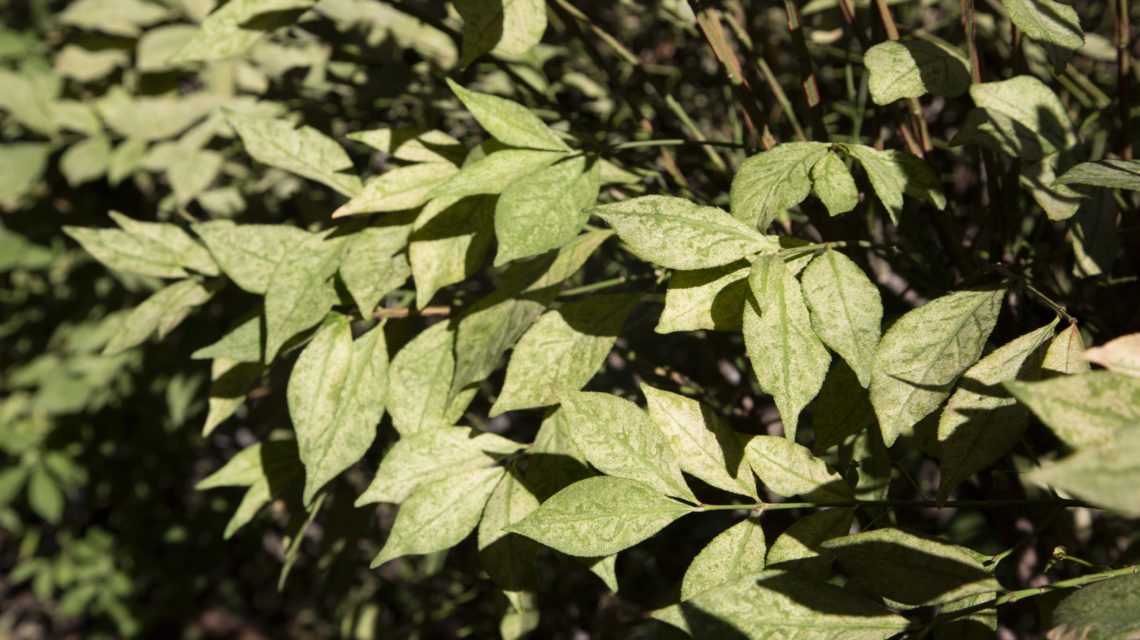Does your tree have shriveled leaves with white or black spots and sticky sections? Your tree may be under attack.
Many insects consume tree foliage and fruit, causing damage that looks unsightly and can weaken the tree. Though leaf-munching pests create easily visible damage, it’s usually not enough to permanently damage the tree. However, when foliar damage is coupled with other risk factors (disease, heat stress, other insect damage, etc.), it can be deadly for the tree.
Aphids, spider mites, and other foliage-eating tree pests are relentlessly devouring trees this year, so read on to learn how to save your tree from these damaging pests!
Skip to a Section:
Aphids
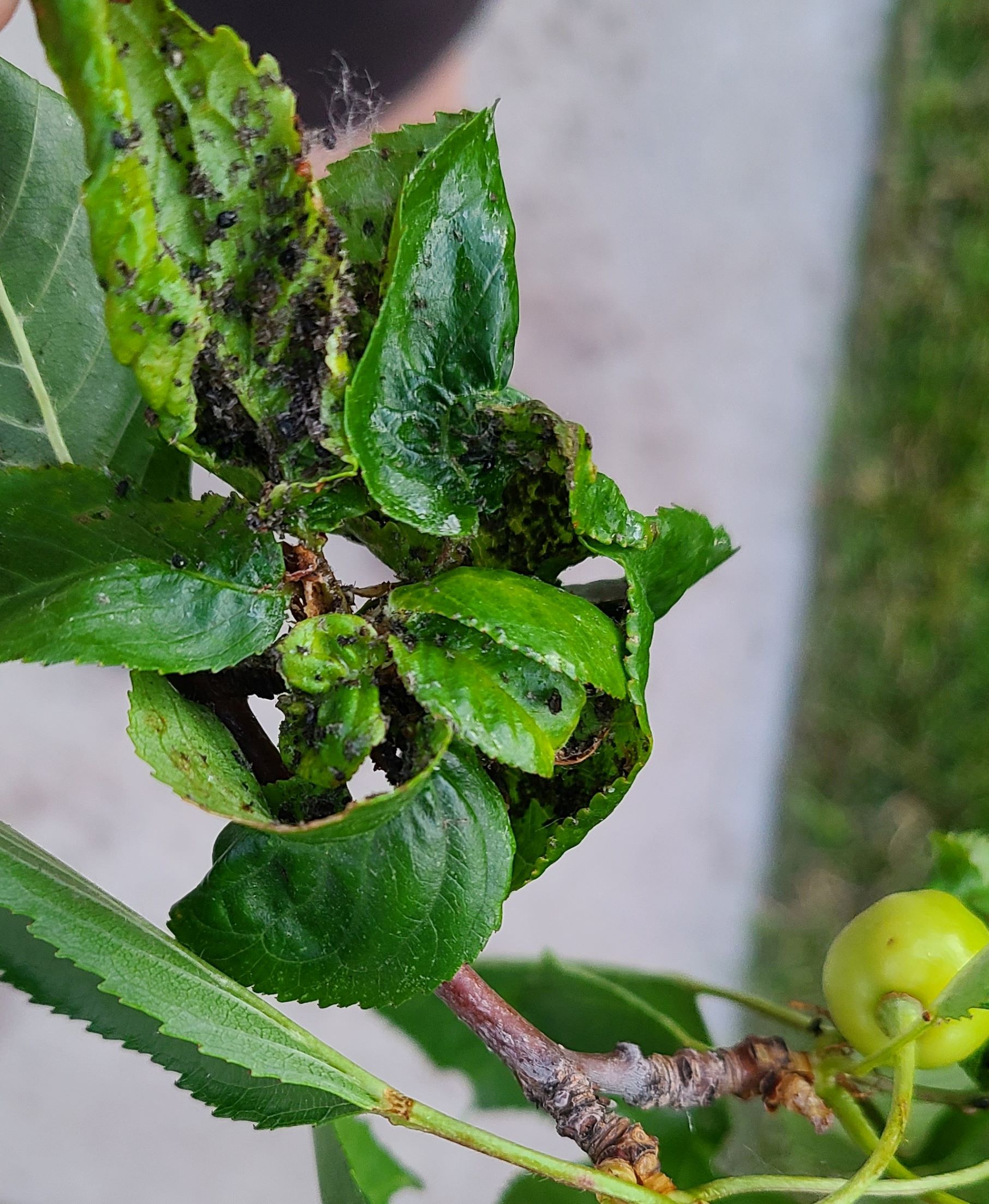

Aphids are a big problem for many trees in Utah this season. There are a few major species of aphids in Utah, and they do a lot of damage. Aphids can tear through a small tree’s foliage in a matter of days, so treating them quickly is vital.
How to Identify Aphids
Two main types of aphids affect trees and plants in Utah: cherry black fly aphids and woolly apple aphids.
Cherry black fly aphids attack young, new growth on cherry trees. They cause leaves to shrivel, and they leave behind a sticky substance. Cherry aphids look like little black specks clumped together on the underside of leaves.
Woolly apple aphids also feed on twigs, branches, and new shoots. They usually attack apple trees, but they also feed on mountain ash, hawthorn, alder, elm, etc. This type of aphid is bluish-black and secretes a waxy substance that makes it look fuzzy.
How to Treat Aphids
You may already be familiar with one of aphids’ natural predators, ladybugs. A few at-home remedies (cold water, alcohol & soap solutions, etc.) can also be helpful aphid treatment options in the short term.
While ladybugs—and sometimes home remedies—can help control aphids, a more effective control measure is insect control spray. Stewart’s tree service treats for aphids and other leaf-damaging insects from late spring to early fall.
Elm Leaf Beetles
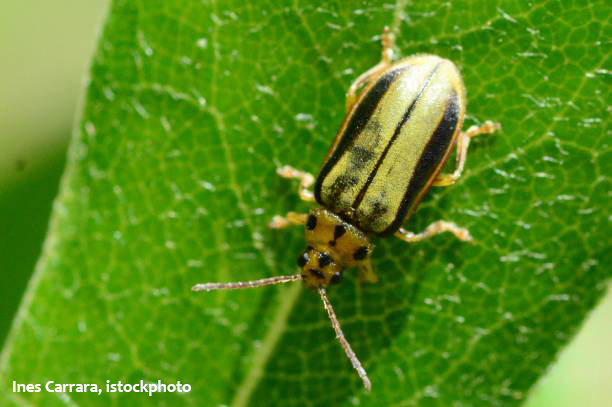

Did you know elm leaf beetles are different from elm seed bugs? Elm seed bugs are relatively harmless to trees because they consume the seeds only, but elm leaf beetles consume leaves, which skeletonizes the foliage. This can make it more difficult for trees to take in the nutrients they need, which leaves them vulnerable to more serious issues.
Elm leaf beetles start out as tiny caterpillars and grow into hard-shelled beetles with yellow and black stripes. When adult beetles hibernate in the winter, their shells turn dark green. In spring, they begin feeding on elm trees (which turns their shells yellow), and females lay eggs on leaves.
Both adult elm leaf beetles and their larvae consume elm leaves. The larvae eat a very thin layer of the leaves, creating transparent layers, and the adults eat holes through the leaves.
These beetles can go through two or three generations before winter rolls around again.
To eliminate elm leaf beetles, consult an arborist about professionally applied sprays and deep-root injections. Professionals are trained to apply treatments safely according to EPA-approved guidelines.
Leaf Miners
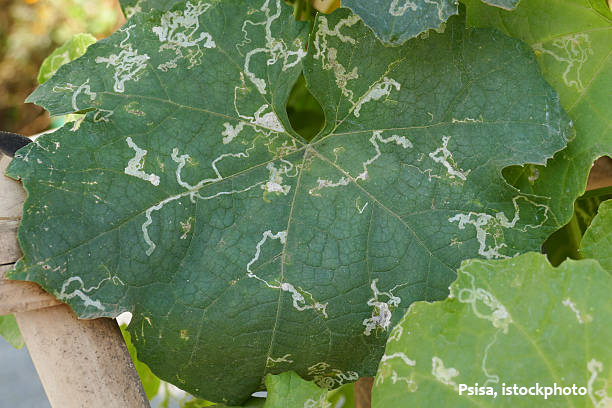

Leaf miners are minuscule larvae (from various insect species) that burrow between the layers of a leaf, creating maze-like grooves in foliage. They are so small that they cause minimal damage to the plants they consume—unless the plant is struggling with additional problems.
The adult form of most leaf miners is a small, black and yellow fly. Some are tiny yellow moths as adults, and others are yellow and black beetles. Once leaf miner larvae have burrowed into the leaf, they are difficult to get rid of, but foliage sprays can help. Consult an arborist if you’re seeing leaf miner damage on your trees.
Root/Vine Weevils
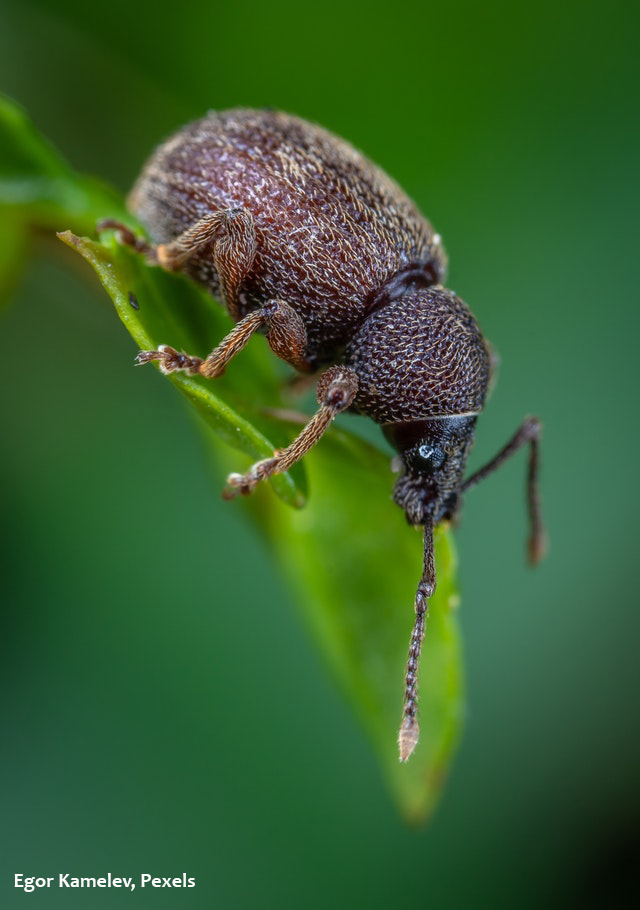

Root weevil adults eat the edges of leaves, creating scalloped edges. Meanwhile, their larvae feed on the roots of the plant. Larvae cause the most life-threatening damage to the plants because they destroy the root system—damage caused by adults is primarily surface-level.
This pest is not very picky and will eat a wide variety of plants; however, they prefer to attack lilac bushes, rose bushes, strawberry plants, grapevines, etc. They tend to feed at night because they are flightless, so dodging daytime predators can be difficult.
The best way to combat root weevils is to use insect control spray around the root zone to eliminate the larvae. Another method is to block adults from crawling up the branches at night by placing sticky barriers around the plant.
This can be difficult to do with some plants, so another method is to spray insect control on the foliage and branches when you start to see weevil damage. Deep root applications are also an effective way of eliminating this pest.
Spider Mites
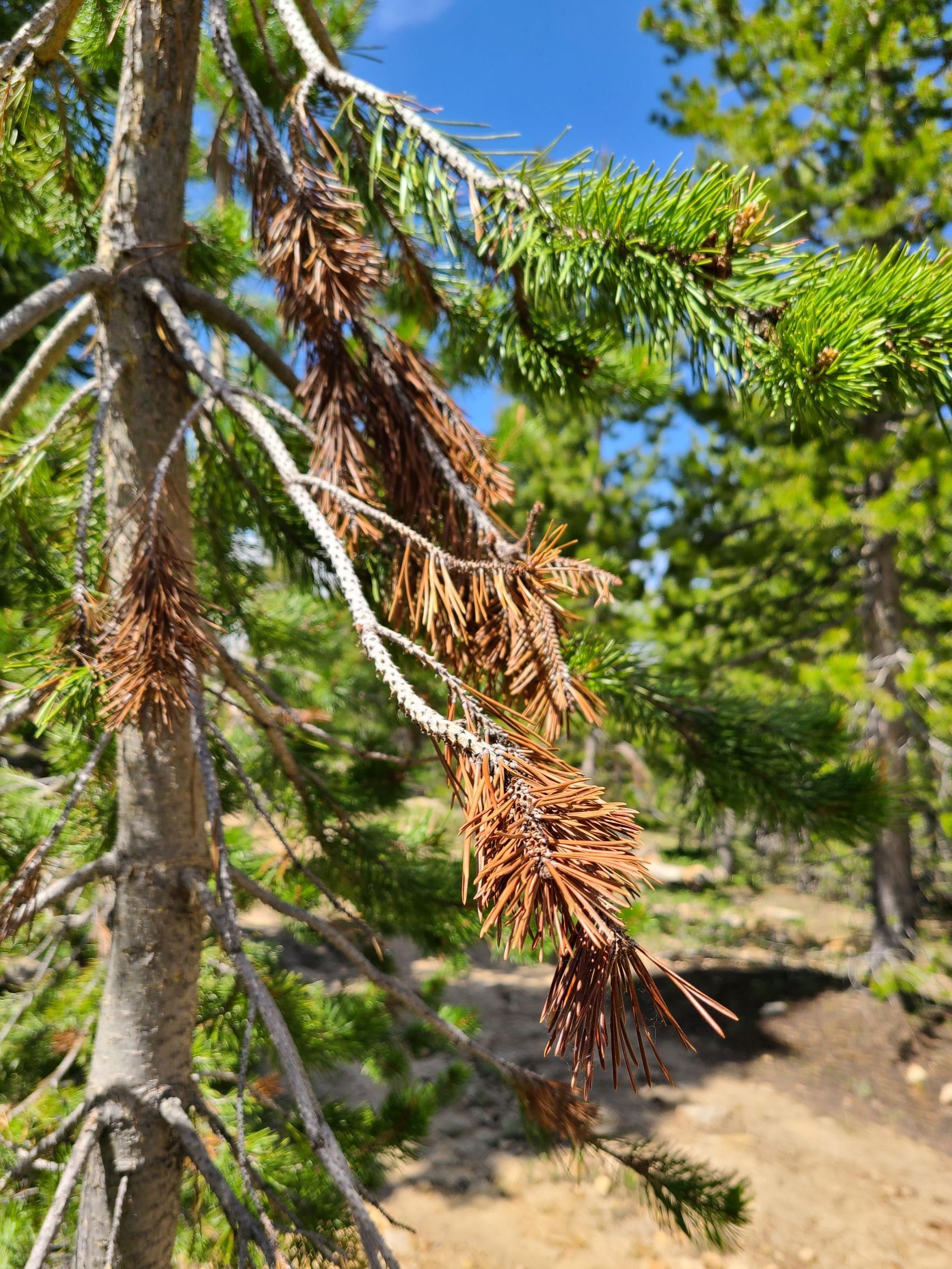

Spider mites can cause massive damage to trees and shrubs if they are left alone. They are most common during summer and attack many types of trees. Trees they prefer to attack are dogwoods, willows, apples, Alberta spruces, etc.
Trees that are in full sunlight or around concrete and buildings (and possibly experiencing drought stress as a result) are much more likely to be infested with spider mites than trees located in cooler, shady areas.
How to Identify Spider Mites
Spider mites cause leaves to develop brown patterns on them before they slowly die. Mites reproduce and move to feed on new leaf growth quickly, making them unstoppable once they start attacking a tree.
Spider mites are usually tiny and red. You can check for mites by shaking a branch over a piece of white paper. If your tree has mites, some of the little specks will start to move around on the paper and will leave rust-colored smears when crushed.
How to Treat Spider Mites
An insect control spray will be most effective when trying to eliminate spider mites. Stewart’s professionally trained technicians can easily spray for them. However, mites can cause damage so rapidly that often it’s helpful for people to spray their tree with a strong stream of water immediately after they see the pest. This will knock the mites off the tree and keep the damage down until the tree can be sprayed with insect control.
Thrips
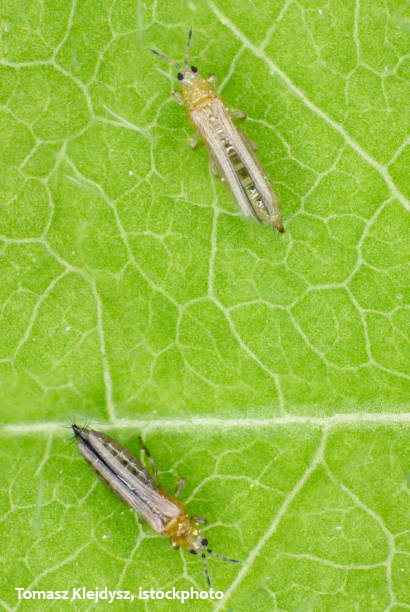

Thrips are tiny pests that damage the surface of leaves, fruits, and flowers when they feed. Thrips cause damage that looks like thin, spidery veins on fruit skin and black or white dots on leaves.
Many species of thrips exist, and not all consume leaves or fruit. Some prey on mites and other insects, and some only cause superficial damage to plants. Other species of thrips can cause significant damage to the plants they consume.
Because they can travel in the wind or through infested plants, thrips spread quickly. They can also be difficult to eliminate from plants without harming beneficial species of thrips.
Contact an arborist if you think thrips are causing major damage to your plants. Professionals can determine what type of thrips you’re dealing with and create a safe, effective management plan.
White Apple Leafhoppers
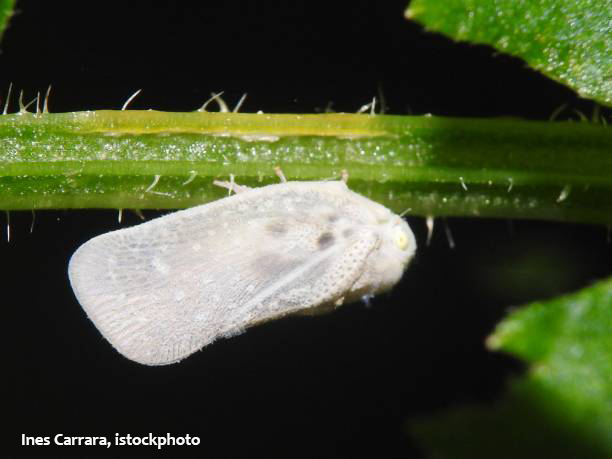

White apple leafhoppers primarily feed on leaves from apple trees, but they also attack peach, cherry, and prune trees, among others. Leafhopper adults look like small, white flies with translucent wings and an elongated body shape.
When they feed, they leave behind black dots, create off-white discoloration on the leaves, and excrete a sticky substance that can cause sooty mold fungus to develop.
While leafhopper damage is unsightly, it doesn’t usually affect the overall health of the tree unless other problems are also present. For this reason, you probably won’t need to eliminate leafhoppers. However, if your tree is experiencing stress from multiple sources, you may want to consider leafhopper treatment options.
If your tree is fighting off an attack from leaf-damaging insects, call or text our office at 801-226-2261 to speak with an ISA-certified arborist and get a free service quote today!



